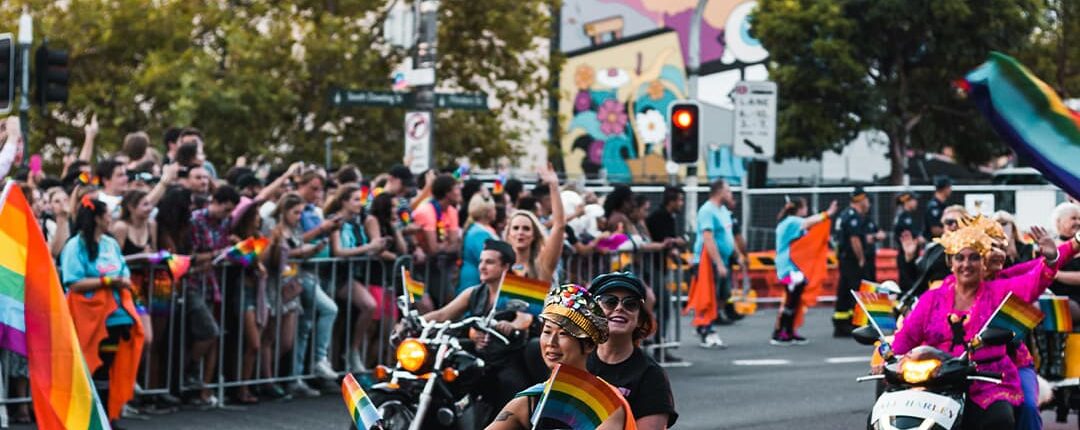June 2021 marks the 52nd anniversary of the Stonewall Riots, a series of protests that catalyzed the civil rights movement for sexual minorities in the United States. On the anniversary of the riots, we tell you what you should know about the date, which is considered the birthday of the modern LGBTQ+ community rights movement.
Gay Pride is an action that demonstrates the existence of sexual minorities in society, supports tolerant attitudes toward them, and fights for civil equality for all regardless of orientation or gender identity. The parade itself recognizes the struggles faced by members of the community and the challenges they continue to face to this day. Despite increasing public awareness of these issues, discrimination continues unabated. In this way, parades and marches for the rights of sexual minorities demonstrate the ability to overcome heartache, fight and strive to live without fear.
Today, gay pride parades are known not only for their pro-LGBT slogans, but also for their bright colors and bold outfits. However, before such a mood and trends emerged, many years passed and many tragic events took place.
On the night of June 27-28, 1969, police raided the Stonewall Inn, a gay bar in the Greenwich Village neighborhood of New York City. Unlike many previous raids that had taken place at the Christopher Street establishment, this one inspired bar patrons to fight back. Resistance to police brutality, which has gone down in history as the Stonewall Riots, is considered the spark that ignited the modern LGBT rights movement.
Historian David Carter once said that these riots “were to the gay movement what the fall of the Bastille was to the beginning of the French Revolution.” Anger and frustration built up over decades as members of the community continually faced systemic hatred and oppression: they were blackmailed, tried, jailed, murdered, and lobotomized for what they called “sexual perversion” and “mental illness.”
The clash at the Stonewall Inn escalated into days of mass protests and riots. Within weeks, activist groups were organized. Within six months, two gay rights organizations were formed in New York City, and three newspapers were established to support the rights of sexual minorities. And a year later, on the anniversary of the raid, the first march was held to honor those who had rioted. Thus, in 1970, The Christopher Street Liberation Day (CSLD) was born. People flocked from all over the city, marching from Greenwich Village to Central Park. In 2010, a participant published a recollection in The Village Voice, emphasizing that on that day “there were no guys in bathing suits, no music.” Instead, marchers marched forward and chanted, “Say it clear, say it loud. Gay is good, gay is proud.”
Similar marches in 1970 were held in Los Angeles, Chicago and San Francisco. And Los Angeles was the only city where the event was authorized by the authorities as a real parade. Along with this status, event organizers received permission to close the streets along the route. And in 1974, just four years later, the Los Angeles parade added a festival component.
According to The Washington Post, the march became known as “Pride” around the mid-1970s, taking its name from an acronym for a gay rights organization called Personal Rights in Defense and Education (PRIDE). Since then, the scope of the celebrations has only grown, even if anti-discrimination laws have been slow to support them.
In the late 1970s, the first rainbow flag, the symbol of the LGBT community, appeared. At first, that symbol was a pink triangle, but because it was used in Nazi Germany to denote “sexual perverts,” many accepted it with mixed feelings. Artist Gilbert Baker created the first rainbow flag for the San Francisco march. His version originally had eight stripes and implied that each represented an aspect of gay identity: bright pink for sex, red for life, orange for healing, yellow for sunlight, green for nature, turquoise for art, indigo for harmony and purple for spirit. Today, rainbow flags are the most common attribute of Pride parades, and in addition, participants often wear brightly colored clothing that incorporates as many different colors as possible.
In Europe, gay pride marches began to take place somewhat later: the first demonstration in London took place in 1970, in Paris in 1971, and in Berlin in 1979. From year to year, the geography of marches has expanded and their scale has grown Thus, in 2015, the Pride march in New York gathered about 1.6 million people. In 2016, CBS News reported that about 2 million spectators joined the marchers. And this year, organizers expect more than 3 million people to participate in World Pride events in New York.
